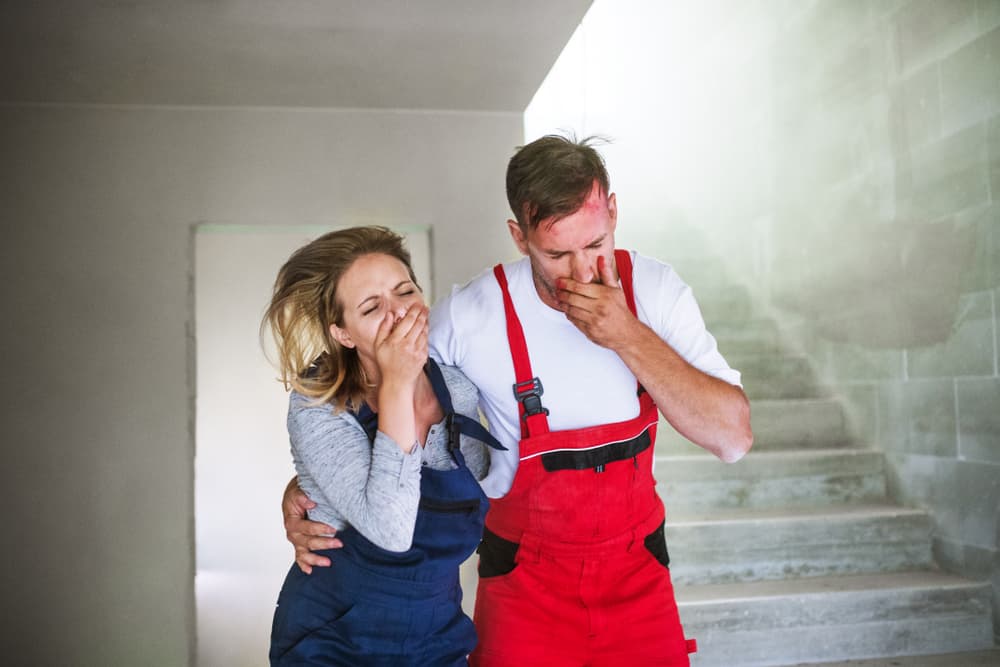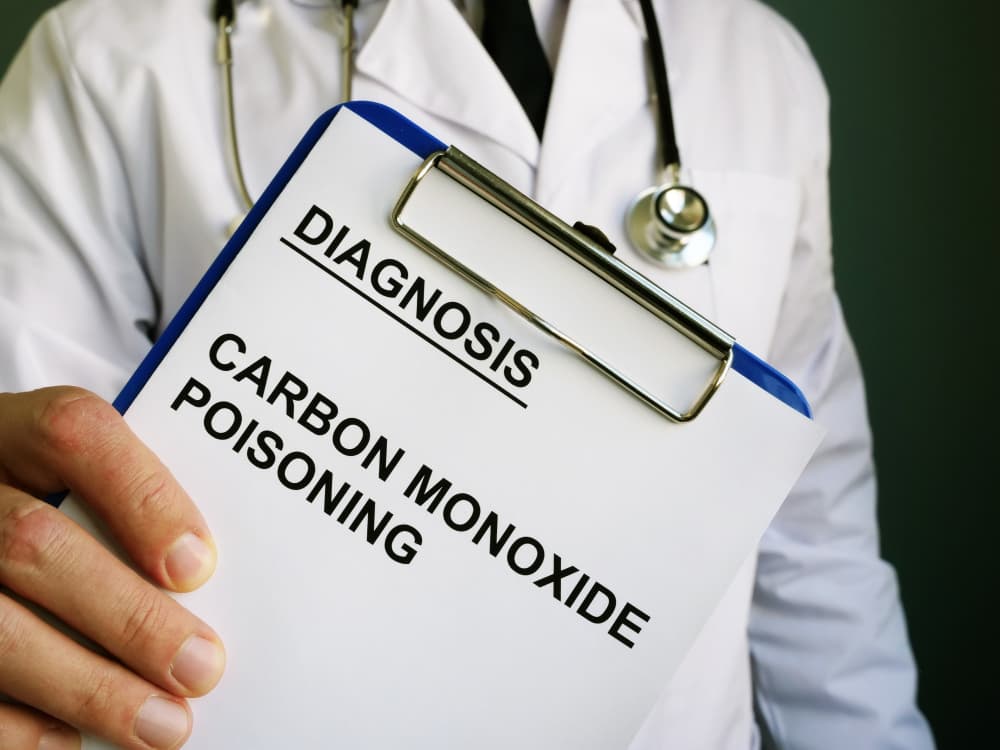Carbon monoxide can instantly create a deadly situation in any season, including summer. Victims have no notice or warning that there is a problem and can suffer critical injuries after brief exposure to the substance.
You may recover significant compensation if you sustained a carbon monoxide injury. If your loved one died from carbon monoxide poisoning, your family can file a wrongful death claim. First, you must determine who was to blame for what happened and take legal action against them.
An experienced carbon monoxide poisoning lawyer in San Antonio can file a lawsuit on your behalf, handle all phases of your case from beginning to end, and work to maximize your financial compensation. When you hire a lawyer, you do not have any financial risk because they will not ask you to pay any money out of your pocket during your case.
Carbon Monoxide Injury Statistics
According to the Centers for Disease Control, an average of 100,000 people visit the emergency room each year with symptoms of carbon monoxide poisoning, with at least 420 people losing their lives to this deadly substance.
Fortunately, the number of people who die from carbon monoxide poisoning has fallen as technology becomes modernized and there are more sophisticated detection systems. However, carbon monoxide poisoning remains a significant problem.
What Is Carbon Monoxide?
Carbon monoxide forms due to the incomplete combustion of fuels. You may have appliances in your home, such as a stove or a furnace, that burn fuel and might produce carbon monoxide.
Breathing in carbon monoxide will cause it to attach to the hemoglobin in your blood and travel throughout your body. Carbon monoxide can also block oxygen, causing severe damage and possible death.
Causes of Carbon Monoxide Poisoning
Household appliances may generate carbon monoxide in the course of how they operate. For example, your stove may produce carbon monoxide when it uses gas. Each device should have a ventilation system, which carries the gas directly out of the residence and keeps you from breathing it in.
However, there may have been inadequate or improper maintenance on an appliance. Then, the ventilation system may not work correctly, causing a carbon monoxide leak into your home, and it will permeate the air you breathe.
The following appliances can produce carbon monoxide poisoning:
- Heating appliances, such as furnaces and heaters
- Stoves and cooking ranges
- Power tools and equipment
- Portable generators
- Hair dryers
Cars and boats also produce carbon monoxide and can injure or kill people in closed spaces.
Carbon Monoxide Poisoning Is Known as a Silent Killer
One may never know that they are inhaling carbon monoxide in the air, which is why the substance is a silent killer. If people miss the early signs of the presence of carbon monoxide, they may lose consciousness and die before ever realizing that anything is wrong.
It is challenging to detect the presence of carbon monoxide on your own because it is invisible and odorless. It has no taste, and you do not know that you are breathing in the substance. If you do notice carbon monoxide in the air, it can be right before you lose consciousness from the poisoning. You can suffer a severe injury or death from as little as a few minutes of exposure to excessive levels of carbon monoxide.
Carbon monoxide may not kill someone immediately, yet the substance can remain in the body for up to 120 days. In the meantime, you may experience significant health effects.
Carbon Monoxide Injuries

Even those who survive carbon monoxide poisoning may have lasting injuries. Carbon monoxide poisoning is most often associated with cardiovascular injuries, and patients may develop myocardial ischemia, which can lead to an increased mortality rate in the future.
Carbon monoxide poisoning can also cause neurological problems. Deprivation of oxygen can lead to brain damage that can cost an accident victim some of their functioning in the future.
Many people who have suffered carbon monoxide poisoning end up with impaired memory. Neurological deficits may persist for a year or longer, and depending on the extent of the brain damage, some people may be permanently impaired.
Filing a Lawsuit for Carbon Monoxide Poisoning
There are two legal theories that you may use to obtain compensation in a product liability case. The most common way to recover is as part of a premises liability lawsuit. Here, the premises belong to the landlord or homeowner, whose obligation is to maintain the property safely and provide a working carbon monoxide detector.
Determining the Proper Defendant in a Carbon Monoxide Poisoning Lawsuit
There is always a possibility that there may be more than one responsible defendant in a carbon monoxide lawsuit, and it is in your interest to name as many responsible parties as possible. This way, more insurance coverage and assets may pay for your damages.
Carbon monoxide verdicts and settlements are generally large because of the serious injuries involved. Therefore, you should do everything possible to maximize your financial recovery and let the courts determine who owes you and how much.
You can file a carbon monoxide poisoning lawsuit against:
- The property owner
- A homeowner whose home you were staying in
- A hotel
- Your landlord
- A maintenance contractor who was responsible for performing work
- An installation company
- The manufacturer of whichever appliance or system had the carbon monoxide leak
It is common for you to sue more than one party, possibly adding a maintenance contractor or subcontractor to the lawsuit.
Proving Negligence in a Carbon Monoxide Lawsuit
In any premises liability lawsuit, the legal standard you need to meet is negligence, and you must prove that the property owner failed to act reasonably under the circumstances. They must provide you with safe premises, not carbon monoxide poisoning and no working detector.
You must prove that the responsible party did not take reasonable steps to keep you safe. It is not automatic that you will win a carbon monoxide poisoning; the mere fact that it happened is not evidence in itself of negligence.
Product Liability Lawsuits for Carbon Monoxide Poisoning
You can also sue a product manufacturer if it is the cause of the injury. The product can be either an appliance that was the source of the leak or a defective carbon monoxide detector that failed to work.
In a product liability lawsuit, you must prove:
- The product had an inherent flaw in its design that made it unreasonably dangerous to consumers
- Something went wrong in the manufacturing of the product that made it unreasonably dangerous
- The manufacturer failed to warn the public about dangers or provide adequate operating instructions
Filing a Carbon Monoxide Poisoning Lawsuit
You must file a lawsuit against the responsible parties to receive financial compensation for carbon monoxide poisoning. The defendants likely have insurance coverage, and their insurance company will step in to defend them. Insurance companies have their own financial motivations at work, but they also owe their policyholder an obligation to settle the claim if possible. Otherwise, their policyholder can file a bad faith lawsuit against them.
Damages in a Carbon Monoxide Poisoning Lawsuit
Given the potential injuries from carbon monoxide poisoning, the damages may be considerable, where the accident victim may have suffered brain damage from the lack of oxygen. Then, they are entitled to a substantial settlement or award when they can prove fault.

Damages in a carbon monoxide poisoning lawsuit can include:
- Medical expenses
- Costs for life care and help with daily activities
- Lost income
- Pain and suffering
- Embarrassment and humiliation
- Loss of enjoyment of life
- Emotional distress
An experienced carbon monoxide poisoning attorney can review your situation, working with expert witnesses to help determine the amount of your damages.
Wrongful Death Lawsuits After Fatal Carbon Monoxide Poisoning
In many cases, the accident victim does not survive the carbon monoxide poisoning. Then, their family is left to deal with the aftermath and can file a wrongful death claim or lawsuit to compensate them for the loss of a loved one.
State law determines who may file a wrongful death lawsuit and how to divide the proceeds.
Wrongful death damages can include:
- The lost income that the deceased person would have earned throughout their career
- The family’s emotional distress and grief about suddenly and tragically losing a loved one
- The loss of the close, loving relationship that the family members had with the deceased person
- The loss of the guidance and support that the deceased person provided the family
- Loss of consortium damages for the physical relationship that the deceased had with their partner
How a Carbon Monoxide Poisoning Attorney Can Help Your Case
When you hire an experienced attorney to handle your carbon monoxide poisoning lawsuit, they will:
- Investigate the cause of the accident to determine who may have been responsible (perhaps finding multiple defendants for you to sue)
- Gather evidence to prove that someone is liable
- Work with expert witnesses to determine the amount of damages that you should seek
- File a lawsuit on your behalf in court
- Build more evidence in your case through the discovery process
- Negotiate a possible settlement agreement with the insurance company or try your case in court
Evidence That Can Prove Your Carbon Monoxide Case
In many cases, the evidence that can prove your case ties a specific defendant to your injury. Carbon monoxide poisoning should never occur. However, there may be numerous gas sources in your residence, and you must prove which one caused your damage.
Sources of evidence can include:
- Expert witness testimony that shows the cause of the carbon monoxide leak
- Maintenance logs that show when an appliance was inspected and repaired
- A police accident report
- Analysis of a specific appliance in your residence
Then, you may need to deal with a defense that you improperly used an appliance that the defendant and their insurance company may advance. Insurance companies blame victims for their injuries because it gets them off the hook.
Hiring a carbon monoxide poisoning attorney does not cost you any money out of your pocket. Since a carbon monoxide lawsuit is a type of personal injury case, your lawyer works on a contingency basis.
You do not have any legal obligation to pay your lawyer unless you win, and payment will come from the proceeds of a settlement or jury award. You should get the legal experience you need to work for accountability and justice.
What to Ask a Carbon Monoxide Injury Attorney
When consulting a carbon monoxide injury attorney, ask key questions to assess their experience and the potential success of your case.
Inquire about the attorney’s experience, specifically in handling carbon monoxide injury cases. Understanding their familiarity with the intricacies of such cases is essential.
Ask the San Antonio personal injury attorney to assess the strengths and challenges of your specific case. Inquire about their initial impressions, potential legal strategies, and the expected timeline.
Discuss the attorney’s approach to handling carbon monoxide injury cases. This includes their investigative process, the identification of liable parties, and their strategy for proving negligence.
Inquire about the attorney’s track record in securing favorable outcomes for clients in carbon monoxide cases. Knowledge of past successes can provide insight into their ability to handle similar claims effectively.
Clarify the attorney’s fee structure, including whether they work on a contingency basis. Understanding the financial aspects of representation ensures transparency and helps you plan accordingly.

Discuss the types of damages you may be eligible to pursue, including medical expenses, lost income, pain and suffering, and long-term consequences of carbon monoxide exposure.
Understand the attorney’s approach to negotiation and litigation. Ask about their experience in settling cases out of court and their readiness to go to trial if necessary.
By seeking your free consultation, you can assess the attorney’s qualifications, understand their approach to handling carbon monoxide injury cases, and make an informed decision about whether they are the right advocate for you.
